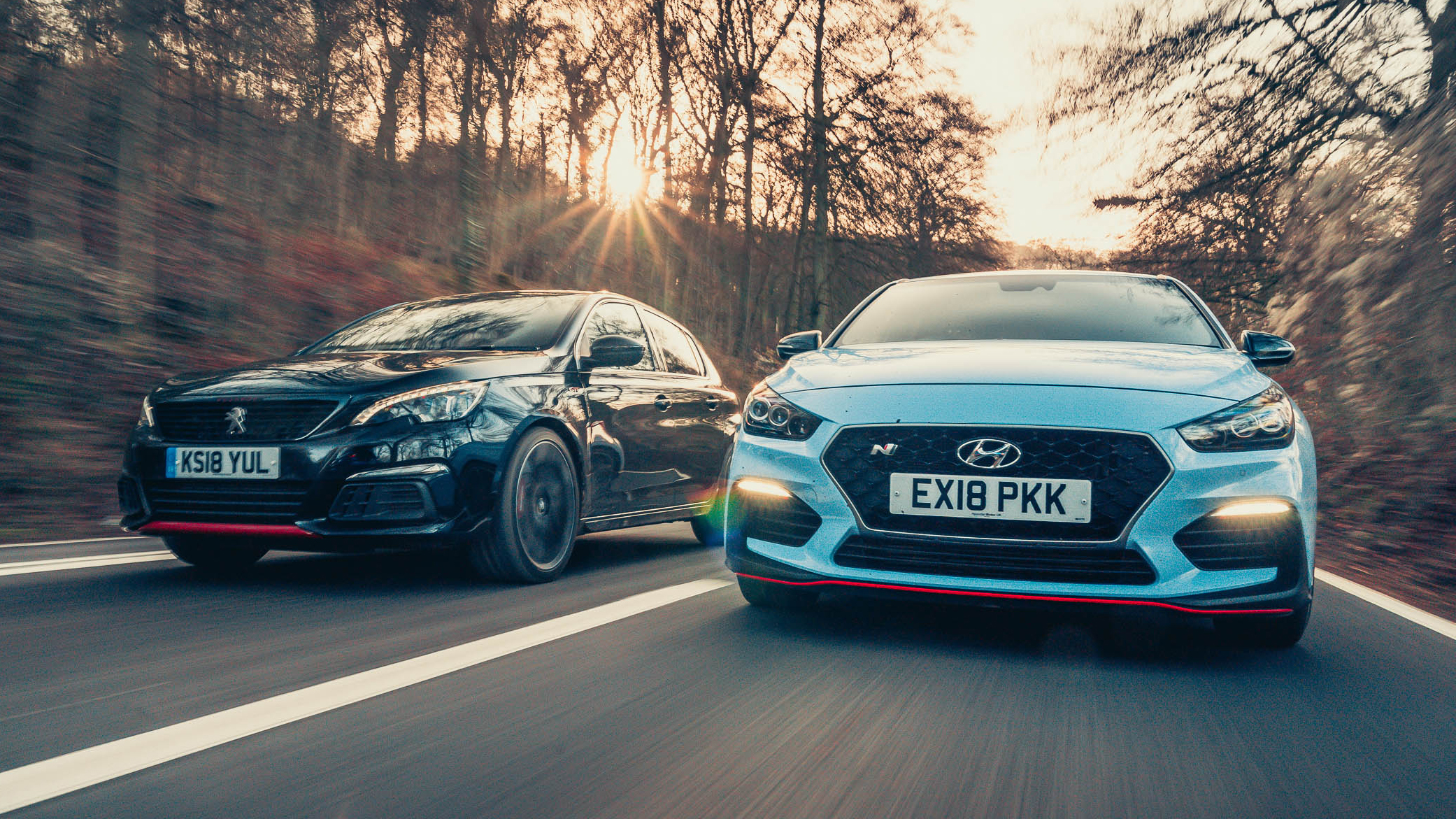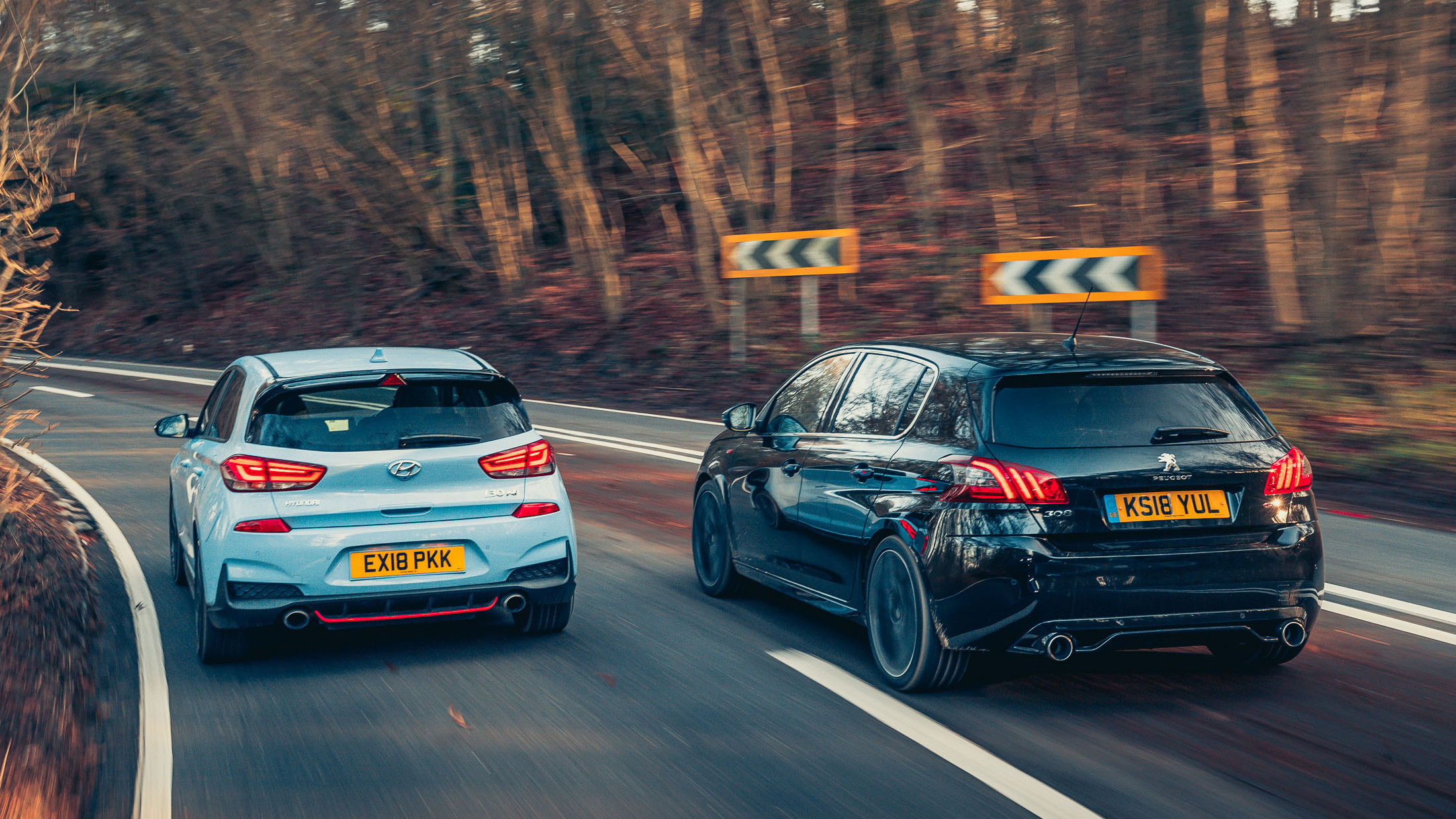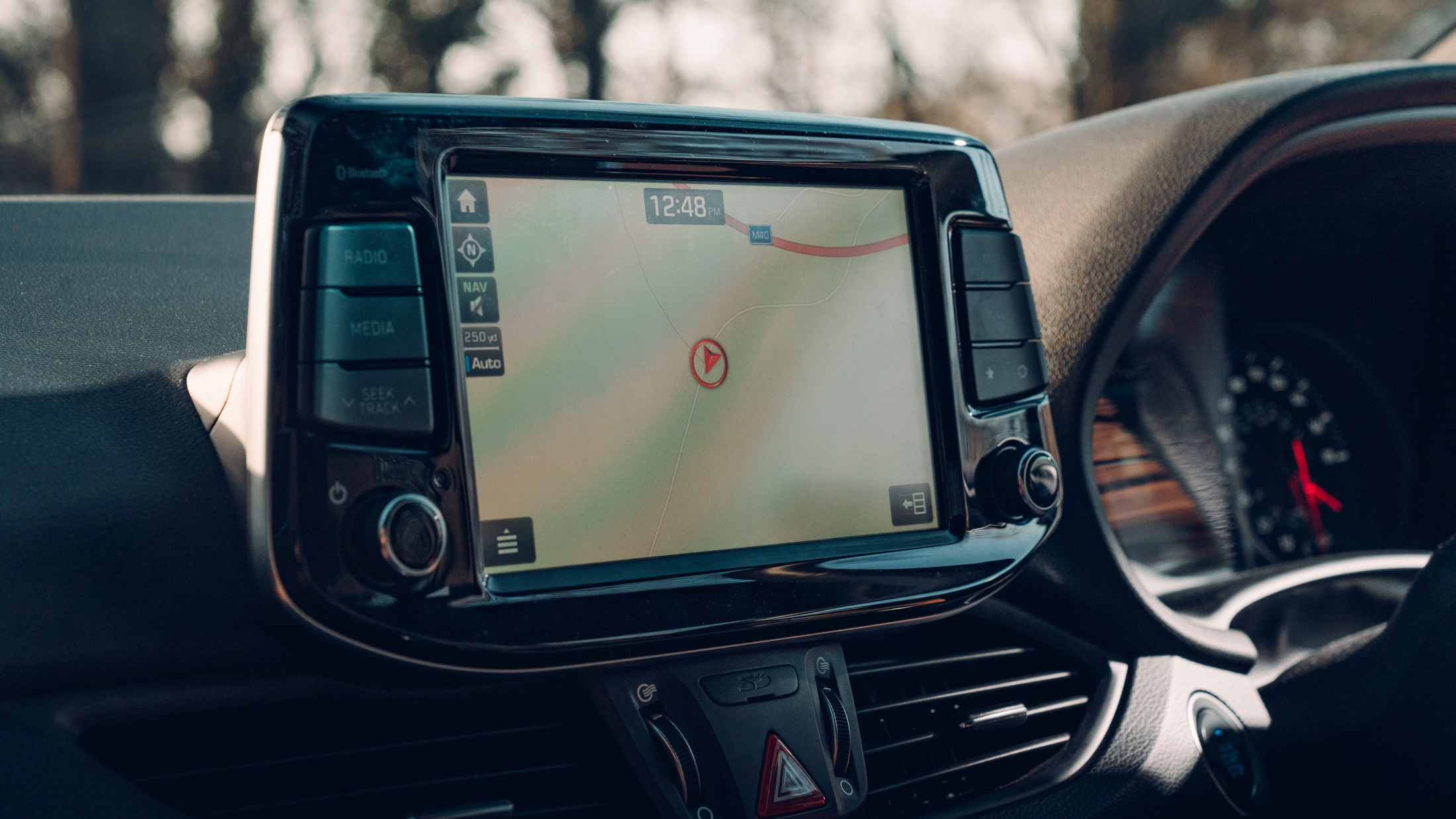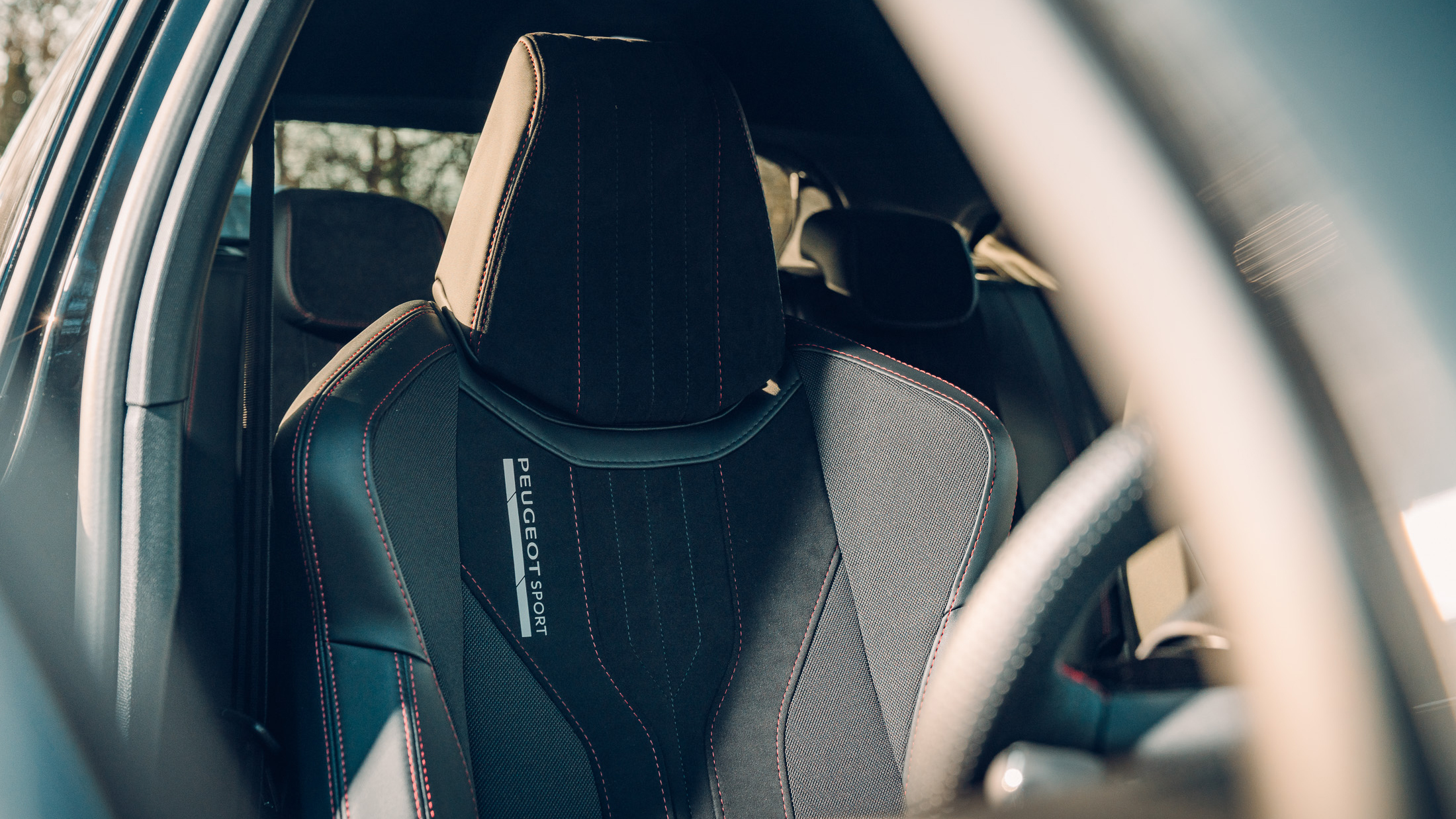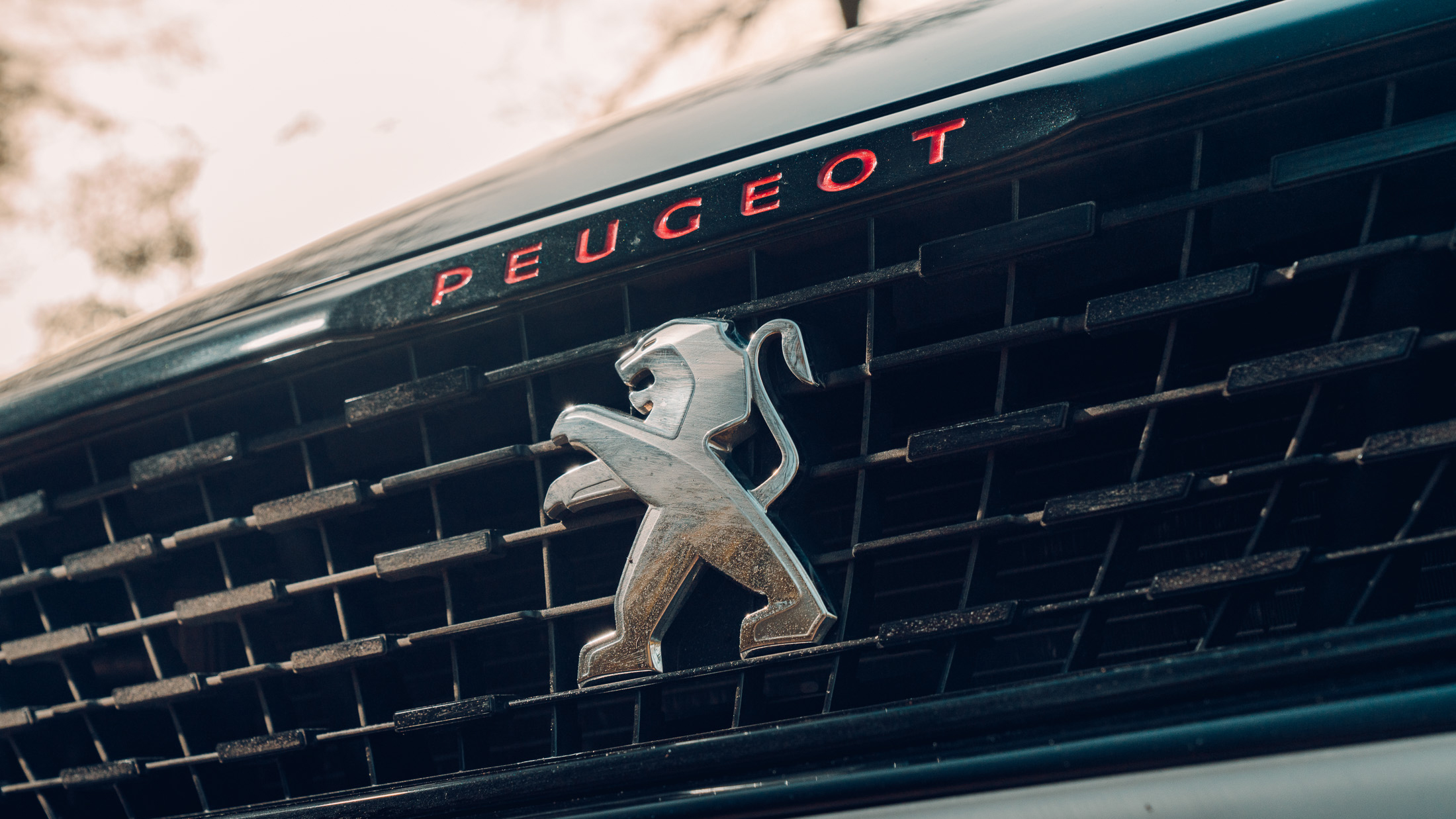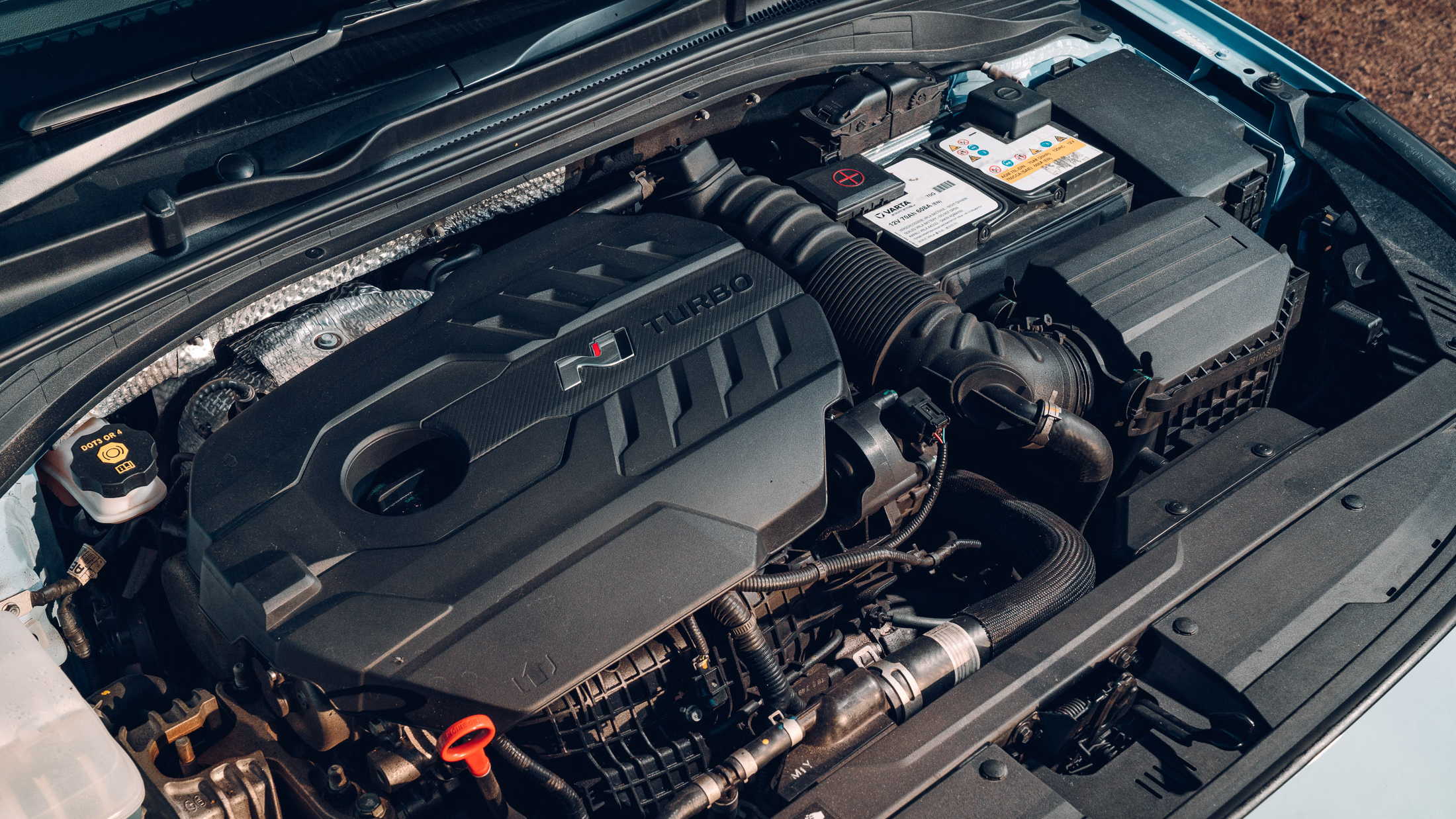
Hyundai i30N vs Peugeot 308 GTI
The two wildest hot hatches on sale battle it out on a wintry B-road
At first glance, this is a foregone conclusion. The Hyundai i30N, the hot hatch hero of the hour, taking on the Peugeot 308 GTI, a car that couldn’t beat the class standard when it launched three years ago.
But what you’re looking at are kindred spirits. These are, without a doubt, the two wildest hot hatches on sale. You just have to scratch a little beneath the Peugeot’s surface to reveal it.
Wilder than the Civic Type R? For all of its visual flamboyance, the Honda’s a very focused, knuckled-down car, a racetrack refugee that grips, grips and then grips a little bit more, just to be sure. It’s an outrageously talented car and the peak of hot hatch abilities right now. But if you care more about that less objective, more tangible thing called ‘fun’, these two might be a better choice.
On paper, they’re pretty close. The i30N’s 2.0-litre turbo four makes 271bhp, the 308 GTI’s 1.6 equivalent producing 258bhp. Each claims a limited 155mph, with the Pug a tenth quicker from 0-62mph, at six seconds dead. Both cost a whisker over £29,000, too, and while you can have a cheaper i30N, you really want the Performance pack tested here, replete with a limited-slip differential, boisterous sports exhaust and larger 19in wheels wearing grown-up Pirelli P Zero tyres.
Thus specced it’s an extraordinarily talented car, one that came oh-so-close to edging out the Type R in a number of comparison tests this year, and its stock only rises the more you drive it. As British roads get wetter and colder, so its mischievous balance becomes evident at even smaller speeds.
Few cars below 30 grand offer kicks like the Peugeot. It’s a wild and ragged ride
This is a car that wants you to have fun whatever your talent and commitment levels, with the safety of a flattering stability control system should you want it. And some frankly outrageous lift-off oversteer should you fancy turning it off. Like a computer game with selectable difficulty levels, the i30N will satisfy everyone and its abilities grow exponentially with yours.
The 308 GTI, however, is a little different. On first impressions you might think it’s a little stodgy and sensible. After the neon blue Hyundai, crackling and parping away even at tiny speeds, the Peugeot’s desperately quiet, visually and aurally. Climb inside and it’s all subdued blacks, with just one Sport button rather than the i30N’s array of colour-coded blue mode selection buttons. Below 2,000rpm, not an awful lot happens, and its springy, oddly positioned pedals will grate nearly as much as the tiny, hyper reactive steering wheel.
Unlike its Korean rival, it requires you to really commit before showing you its hand. But one short blast beyond 2,000rpm really is enough; do so and its vivacious engine simply soars to 7,000rpm, completely belying its weeny size with a crazed ferocity that startles both its driver and the front wheels. In anything less than dry, smooth conditions you’ll be managing torque steer and wheelspin in equal measure, the car making a minor meal out of going in a straight line in its lower gears.
It’s a shock after the precision of the Hyundai, but not an entirely unwelcome one. It’s a wake-up call to be smooth and attentive, virtues you’ll need if you’re to drive this thing briskly. While the i30N’s got adaptive damping with three different modes, the 308 makes do with just one, passive setting, and it’s firm.
Top Gear
Newsletter
Thank you for subscribing to our newsletter. Look out for your regular round-up of news, reviews and offers in your inbox.
Get all the latest news, reviews and exclusives, direct to your inbox.
It’s over 100kg lighter than the i30N, though, and the resulting agility is evident both in just how bombastically it accelerates and how urgently it flicks into corners. Really push it hard and it becomes clear Peugeot wanted to recall its Eighties and Nineties hot hatch heyday, with an excitable handling balance that needs caution with the electronic nannies off. Few cars below 30 grand offer kicks like this. It’s a wild and ragged ride, but hey, some of us like that.
The i30N can thrill too, make no mistake. And it does so with so much more precision than the 308. Its steering comparatively spills with communication, while its six-speed manual gearbox feels sharper and its pedals are much better placed. If you don’t want to (or can’t) heel-and-toe yourself, it also has auto rev-matching. Neither car, it must be noted, comes with the option of an automatic gearbox.
In isolation, the Hyundai is a firm and uncompromising thing, but after the Peugeot it feels a touch calmer and certainly more scrupulously developed. While there’s fun in hanging onto the 308 on a challenging road, feeling fully in control of a car certainly has its charms too. The i30N can’t compete in terms of acceleration, mind, and its extra weight is demonstrable.
Not least when it comes to running costs. I’ve been driving this Top Gear Garage i30N for almost a year, and getting the trip computer readout above 30mpg is a constant battle, as is scraping 300 miles from a tank of fuel. The 308 manages 35mpg without a thought and would doubtless top 40mpg if you acted sensibly. To add to its everyday abilities, it also has a turning circle that embarrasses the i30N’s and it’s much quieter on a motorway cruise, too.
The i30's loud and brash beside the 308, but its bite very crucially matches its bark
It also boasts a more premium looking interior, though that’s largely thanks to Peugeot scooping all of the stuff normally operated by buttons, such as the climate control, and dumping it all inside the touch screen. Great for decluttering the dashboard, but not so helpful to actually use, and Hyundai’s done a much better job of ergonomics. Everything’s brighter in the i30N, too, with light blue buttons and stitching and an illuminated rev counter, the red line moving around the dial as the engine warms up. Geeks rejoice.
The 308 hits back with some superb sports seats, edging even the i30N’s. Hot hatches are at the top of their game across the board right now, and I’m not sure there’s a bad seat in any of them. The Peugeot Sport engineers have properly nailed it though, even taking the time to make theirs look good. And fit a massage function…
It’s a divisive car, though, the 308 GTI. Some members of our office aren’t as enamoured as me, and it’s hard to deny that a car requiring so much focus and commitment to fully unearth its magic will only ever have niche appeal. Hook everything up, though, and it’s a proper thriller. But then so is the Hyundai, and more of the time, too. It’s loud and brash beside the Peugeot, but its bite very crucially matches its bark. This is a real hot hatch milestone; the very first car to come from Hyundai’s N division, and an absolute belter right out of the box. Quite how good its replacements will be must surely be giving Peugeot (and Ford, Honda, Seat and VW…) sleepless nights.
There are flaws to iron out – I sometimes wonder if ours has a fuel leak, it’s so thirsty – but the core product is so effervescent, you cease to worry about the boring stuff. I’ve a real soft spot for the 308 GTI, and I adore cars so unabashed about testing their driver’s ability. I’d have it over a Golf GTI any day. But I’d have the i30N over both of them.
Images: Mark Riccioni
Trending this week
- Car Review
BMW 1 Series
- Top Gear's Top 9
Nine dreadful bits of 'homeware' made by carmakers




